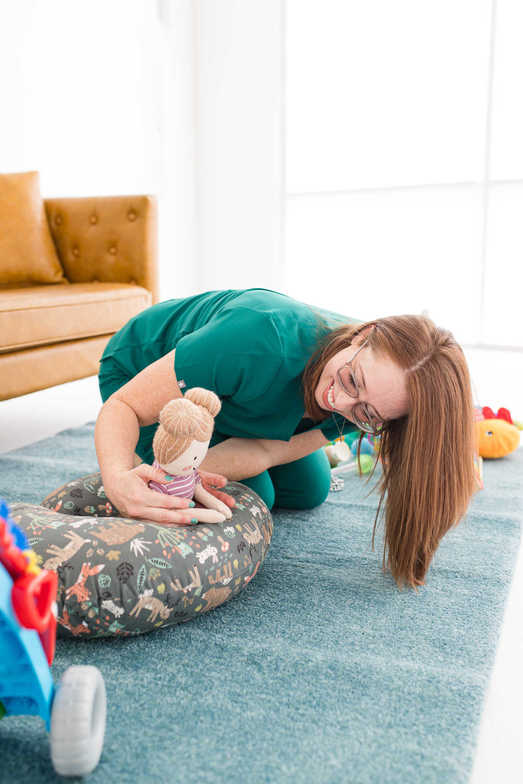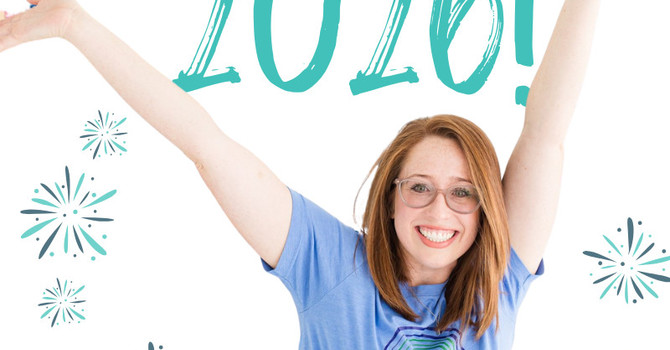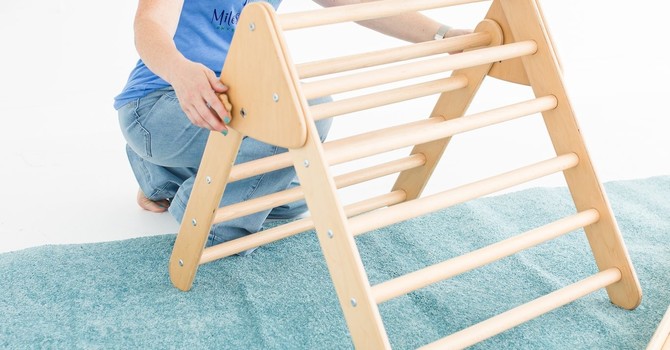
My goal with these checklists is to create a resource for parents, a resource that provides both the age-appropriate milestones AND purposeful play ideas on how to help your little one stay on track. There is so much information out there, sometimes information overload, and having this in one place I hope it makes your parenthood journey a little easier.
So, your little one is more than just a blob by now! You're starting to get the hang of it and so is your kiddo. They are stronger and you're more confident in their abilities. They are more responsive and there are longer wake periods, it's a time for fun and connection (and survival mode, am I right?!).
During this time, you will start to see your little one start to discover movement. By now they may roll tummy to back and almost always by accident at first! Or maybe they are rolling back to side? They can elevate their head for longer periods of time without getting tired and you'll notice they may begin to weight shift and reach for toy - a mini milestone required for rolling tummy to back!
This is the time to develop a routine that allows your little to focus on gross motor development from ALL positions, on their tummy, backs, sides, and in sitting.
In tummy time, be sure to place toys at eye level to encourage active use of their shoulders and arms. Some of my favorite toys for this age are mirrors, water mats, high contrast books, and yes...noisemakers. I personally only pull out the flashy toys when it's time to "work". And don't forget your face, THE number one toy. Read, sing, and get down on the floor with them. You'll get to see those cute faces elevated and looking around! Pro Tip - if your little is a swimmer during tummy time, place their arms under their chest (like the little guy in the photo). This will help them initiate rolling and prevent over strengthening of their backside. And if tummy time is hard, because for many it is, try propping their elbows on a boppy pillow, prop-a-pillar, or towel roll to build up endurance and confidence. Hang in there!
On their side, they'll start reaching and kicking their legs, rocking back and forth. These movements will provide proprioceptive and vestibular input that stimulate their developing brains. If positioned on their side, place a toy just out of reach and when they reach, they'll roll onto their tummy. Woohoo! Don't be afraid to show your little one how to reach, don't forget they are new at this too! And at this age your kiddo will likely need help repositioning their arms; continue to show them how to tuck their elbows under their chest until it becomes natural for them. My favorite toys in side lying are rattles and light up toys, anything that allows your kiddo to be successful.
Don't forget to play on their backs. I love using play mats and activity gyms during back play. Position your baby with toys hanging just above their chest, so they must look toward their belly and reach straight up. The front neck and abdominal muscles are just as important as the back and shoulder muscles, especially when it comes to rolling and sitting balance. During diaper changes show them their feet, bring their hands to their feet and rock side to side; another mini milestone for rolling back to tummy! Pro Tip: With baby sit ups, encourage your little one to be active, to actively pull their chin to their chest. Sometimes you just need to support them at their shoulders and give them extra time to engage before transitioning all the way to sitting.
And last but not least - sitting! By the end of 5 months your little may be able to sit for a few seconds without support. I highly recommend using a boppy pillow or prop-a-pillar around the baby's waist when practicing sitting. At this age, trunk control and balance reactions are still developing so don't expect your little one to be left alone in sitting. You'll see most littles "ring sit", this is where their feet touch at midline and their feet and knees forms a circle with their bodies. To develop head and trunk control required for independent sitting, encourage supported sitting with both arms in weight bearing on an elevated surface. Try a large toy, the boppy or prop-a-pillar, a lap desk, or even push toy! You little one will learn to sit using both arms for support and will transition to play without support over the next few months. Pro Tip: support your little at their shoulders and as they improve their head control and balance, move your support closer to their hips. And use suction cup toys on the play surface to keep them engaged so you won't be picking toys the entire time!
Remember development is a continuum and all kiddos move at their own pace. So, hang in there! If you have questions or concerns about your little one's development don’t hesitate to reach out. As a mom and a pediatric physical therapist, I am here to help! It is my goal to set kiddos and parents up for gross motor success and you can book a free discovery phone call! Stay tuned as I publish more blog posts with checklists from birth - 5 years of age!
And if you made it this far, thank you! And check out and follow, like, comment, etc. our social media accounts. I appreciate it!
Instagram: @milestonesatplay
Facebook: Milestones At Play
TikTok: @milestonesatplay


